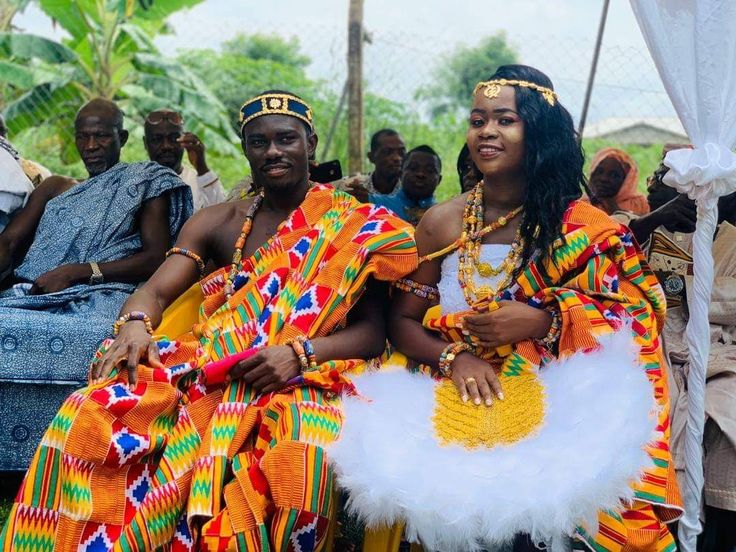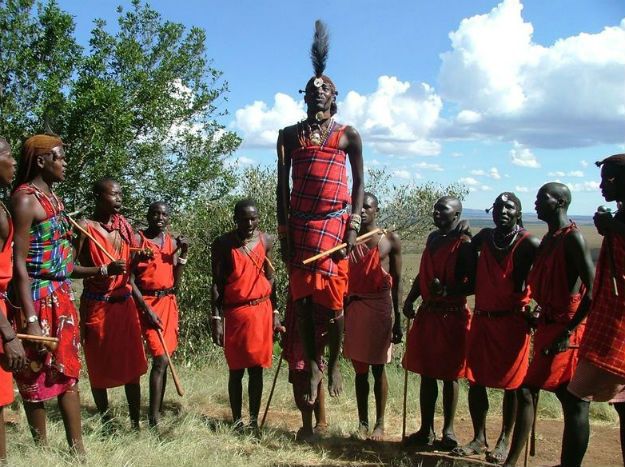Physical Trials and Ordeals
Endurance Tests
Physical trials and ordeals are common elements in initiation rites across various cultures, including many African tribes. These tests serve as crucial stepping stones into adulthood, pushing individuals to their limits both physically and mentally.
The nature of these trials varies considerably depending on the specific tribe and its cultural beliefs. Some involve grueling endurance runs, often over challenging terrain. Others may require participants to wrestle with seasoned elders or engage in feats of strength such as lifting heavy objects or carrying logs.
In some tribes, isolation is a key component of the ordeal. Young men might be sent into the wilderness alone for extended periods, relying on their survival skills and resilience. This period of solitude serves to test their resourcefulness, courage, and ability to withstand hardship.
Another common element is the infliction of pain or discomfort, though this is usually done with a symbolic purpose rather than mere cruelty.
Practices such as scarification, branding, or piercing are often incorporated into initiation rituals. These physical marks serve as visible reminders of the ordeal and the individual’s commitment to their community.
The significance of these trials lies not just in the physical achievements but also in the psychological transformation they induce. By overcoming adversity and facing their fears, young individuals demonstrate their readiness for adulthood, earning respect and recognition from their peers and elders.
These rites of passage serve to bind communities together through shared experiences and reinforce the values of strength, endurance, and resilience.
Scarification and Body Modification
Physical trials and ordeals are a common element in initiation rites across numerous African tribes, serving to test the physical and mental fortitude of individuals transitioning into adulthood. These trials often involve endurance challenges such as long-distance runs, carrying heavy objects, navigating challenging terrain, or enduring periods of fasting and sleep deprivation. The purpose is not only to assess physical capability but also to demonstrate resilience, perseverance, and courage in the face of hardship.
Scarification and body modification are deeply ingrained practices within many African cultures, often serving symbolic and social functions within initiation rites. These practices involve deliberate alterations to the skin through cutting, piercing, or branding, resulting in permanent marks that convey status, belonging, and personal identity. The specific patterns and placements of scars can vary widely between tribes, carrying distinct meanings and signifying different stages of life or achievements.
The act of scarification itself is often accompanied by rituals and ceremonies, reinforcing the spiritual significance of these modifications. For example, some tribes believe that scarification connects initiates to ancestral spirits or bestows upon them supernatural powers. Moreover, the pain endured during scarification symbolizes the sacrifices individuals make in their pursuit of adulthood and their commitment to their community.
While Western societies often view scarification as barbaric or outdated, it’s essential to understand its cultural context and significance within African communities. These practices are not merely aesthetic choices but deeply rooted traditions that play a vital role in shaping identity, belonging, and social cohesion.
Confrontation with Animals
Physical trials and ordeals are common features in initiation rites across various African tribes, serving as a symbolic test of strength, resilience, endurance, and courage.
These trials can involve a range of physically demanding tasks, often designed to push individuals to their limits.
Here are some examples:
- Running long distances: This test measures stamina and determination. Participants may have to run through challenging terrain or for extended periods without rest.
- Carrying heavy loads: Strength and endurance are tested by carrying heavy objects over long distances. These loads can range from stones or logs to water containers.
- Climbing steep cliffs or trees: This test assesses agility, balance, and courage. It often involves navigating treacherous heights and overcoming fear of falling.
- Swimming in rivers or lakes: This trial tests bravery and the ability to survive in potentially dangerous waters. Participants may have to swim against currents or for extended periods.
Confrontation with animals is another significant element in some initiation rites.
These encounters are often symbolic, representing the need to overcome fear and assert dominance over the natural world. The types of animals involved can vary depending on the tribe and cultural beliefs.
- Facing lions or other large predators: This is a deeply symbolic test of courage and bravery, as these animals are often seen as powerful and dangerous.
- Wrestling with wild boars or buffalo: These confrontations require strength, agility, and the ability to withstand attacks. The successful wrestler may be seen as demonstrating dominance over nature.
It’s important to note that these physical trials and animal encounters are typically conducted under the guidance of experienced elders or spiritual leaders who ensure safety measures are in place. The purpose of these rituals is not necessarily to cause harm but rather to push individuals beyond their comfort zones, foster courage, and instill a sense of belonging within the community.
Spiritual and Symbolic Rites
Communion with Ancestors
Spiritual and symbolic rites are deeply woven into the fabric of many African cultures, serving as conduits to ancestral wisdom, divine power, and community cohesion. These rituals often mark significant life transitions, reaffirm cultural identity, and forge connections between the living and the spirit world.
Communion with ancestors is a cornerstone of these practices. Africans believe that ancestors remain active participants in the lives of their descendants, offering guidance, protection, and blessings. Rites aimed at honoring and engaging with ancestors are widespread, taking diverse forms depending on the specific tribe or region.
Initiation rites, particularly those marking the transition to adulthood, often involve elaborate ceremonies designed to integrate young individuals into the social and spiritual fabric of their community. These rites can be physically demanding, requiring endurance, courage, and self-discipline.
Symbolic rituals play a crucial role in conveying complex cultural values and beliefs. The use of masks, costumes, music, dance, storytelling, and specific objects imbues these rites with profound meaning. For example, certain plants or animal parts may be incorporated into ceremonies to symbolize fertility, strength, or protection.
These initiations and communion practices are not merely nostalgic echoes of the past but living traditions that continue to shape contemporary African societies. They provide a framework for understanding one’s place in the world, navigating life’s challenges, and transmitting cultural heritage across generations.
Herbal Medicine and Healing Ceremonies
Spiritual and symbolic rites are deeply interwoven with herbal medicine and healing ceremonies in many African tribes, forming a holistic approach to well-being that connects the physical, emotional, and spiritual realms. These initiations often mark significant transitions in an individual’s life, such as coming of age, marriage, or entering a particular social role.
Herbal medicine plays a central role in these rites, with plants possessing inherent medicinal properties used to treat illness, promote healing, and enhance spiritual connection. Knowledge of medicinal plants is often passed down through generations, held by elders or specialized healers who act as custodians of this ancestral wisdom.
Healing ceremonies are elaborate rituals designed to restore balance and harmony within individuals and communities. They may involve singing, dancing, drumming, storytelling, divination, and the use of herbs in various forms—from infusions and poultices to fumigations and anointing oils. The specific practices vary widely across tribes, reflecting unique cultural beliefs and traditions.
These ceremonies often incorporate symbolic representations that carry deep meaning. For example, certain plants might be used to symbolize purification, protection, or fertility, while specific colors, patterns, or movements may evoke ancestral spirits or deities.
The integration of spiritual elements in these rites is paramount. They often involve invoking the guidance and blessings of ancestors, spirits, or deities believed to reside within nature. Offerings are made, prayers are recited, and rituals are performed to seek divine intervention or favor in healing and transformation.
Initiation rites serve as a bridge between generations, transmitting cultural knowledge, values, and spiritual practices. They empower individuals with a sense of belonging, purpose, and connection to their heritage while fostering resilience and strength within communities.
Dream Interpretation and Divination
Throughout Africa’s diverse cultures, initiation rites serve as profound gateways into adulthood, marking a significant transition in an individual’s life and their place within the community. These rituals often intertwine spiritual, symbolic, and practical elements, encompassing elaborate ceremonies, physical challenges, and profound lessons.
Many African tribes believe that these rites connect individuals with their ancestors and the spirit world. They may involve divination practices to seek guidance from spirits or divine beings, ensuring a smooth transition into adulthood and future success.
Dream interpretation plays a crucial role in these rituals. Dreams are often seen as messages from the ancestors or spiritual guides, providing insights into the individual’s strengths, weaknesses, and destiny. Experienced elders interpret dreams within the context of the initiation process, offering guidance and wisdom to the initiate.
Symbolic objects and actions hold deep meaning in these rites. For example, a ceremonial mask might represent an ancestor or spirit guardian, providing protection and guidance to the initiate. Tattoos or body scarification may symbolize courage, belonging, or specific tribal affiliations.
Initiation ceremonies often involve challenges that test the physical and mental strength of the participants. These trials can range from endurance feats to symbolic battles, representing the struggles and triumphs they will face in adulthood.
The culmination of these rites typically involves a formal declaration of adulthood, where the initiate receives new responsibilities within the community and embraces their role as a contributing member of society. The initiation process is not simply a transition into physical maturity but a spiritual journey that fosters a deeper connection to ancestors, community, and the sacred.
Integration into Society
Naming Ceremonies
Integration into society through naming ceremonies is a significant aspect of many African tribes’ initiation rites. These ceremonies mark a profound transition in an individual’s life, signifying their acceptance into adulthood and their place within the community.
Naming ceremonies are often elaborate affairs, involving rituals, songs, dances, and blessings from elders. The chosen name carries deep cultural significance, reflecting the child’s personality traits, birth circumstances, ancestral lineage, or hopes for their future.
Purpose and Meaning: Naming ceremonies serve various purposes, including:
- Formal Recognition: To officially acknowledge the child’s birth and integrate them into the social fabric.
- Identity Formation: To bestow a name that reflects the child’s individuality, lineage, or destiny.
- Spiritual Connection: To invoke ancestral blessings and connect the child to their heritage.
The process of selecting a name is often steeped in tradition. Elders may consult with ancestors or spiritual guides, seeking guidance on the most appropriate name for the child. The chosen name can also be influenced by:
- Birth Order: In some cultures, the name reflects the child’s position within their family.
- Circumstances of Birth: Unusual births or events surrounding the birth may inspire a unique name.
- Desired Qualities: Parents may choose names that embody virtues they hope their child will possess.
The naming ceremony itself is a joyous celebration, involving feasting, dancing, and the recitation of ancestral stories. The community gathers to witness the transition of the child into adulthood and offer blessings for their future.
Allocation of Roles and Responsibilities
Integration into society is a fundamental aspect of human existence, shaping individuals’ identities and their place within communal structures. In many African tribes, initiation rites serve as a crucial transition point, marking the passage from adolescence to adulthood and integrating young people into the social fabric.
These rituals often involve symbolic acts, tests of endurance, and teachings about cultural norms, ethics, and responsibilities. The specific practices vary widely across different tribes, reflecting unique traditions and beliefs. For instance, some tribes may require boys to undergo circumcision or spend time in isolation, while girls might be secluded for a period of instruction on domestic skills and societal expectations.
The allocation of roles and responsibilities within African societies is deeply intertwined with these initiation ceremonies. Through these rites, young people are formally introduced to their expected obligations within the community. This can involve taking on specific duties related to age groups, kinship ties, or gender roles.
In many societies, elders hold positions of authority and wisdom, guiding the younger generations and preserving cultural knowledge. Men may be responsible for tasks such as hunting, farming, or protecting the village, while women often manage domestic affairs, raise children, and participate in craft production. These divisions of labor are not always rigid, but they provide a framework for understanding social structures and individual contributions.
The initiation process is not merely about assigning roles; it’s also about fostering a sense of belonging and shared identity. Through rituals, storytelling, and communal participation, young people connect with their ancestors, learn about their heritage, and develop a profound understanding of their place within the broader social tapestry.
Marriage Rituals and Procreation Symbolism
Integration into society is a fundamental aspect of human existence, and across diverse African tribes, initiation rites serve as powerful mechanisms to facilitate this transition. These ceremonies mark the passage from childhood to adulthood, signifying a young person’s readiness to assume adult responsibilities within their community.
Marriage rituals are often deeply intertwined with societal integration. They represent not only the union of two individuals but also the joining of families and lineages. Many African cultures emphasize communal support within marriage, with extended family members playing significant roles in both pre-marital arrangements and post-marital life.
Procreation symbolism is prevalent in many African initiation rites and marriage ceremonies. Fertility is highly valued, symbolizing continuity, prosperity, and the strength of the community. Rituals may involve offerings to fertility deities, dances mimicking reproductive acts, or the use of specific plants and animals associated with abundance and life.
The specifics of these rituals vary widely across different tribes, reflecting unique cultural beliefs and traditions. Some initiations involve seclusion periods, physical challenges, and symbolic cleansing, while others emphasize storytelling, dancing, and communal feasting. These variations underscore the richness and complexity of African cultures, where societal integration, marriage, and procreation are interwoven with profound spiritual and social significance.
- 10 Initiation Rights Of African Tribes - September 30, 2024
- 10 Astounding Facts About The Great Pyramid Of Giza - September 29, 2024
- The 5 Tallest Cities In The World - September 20, 2024




